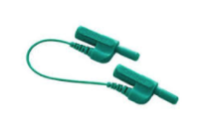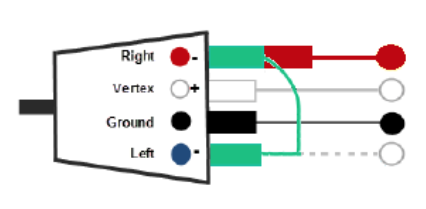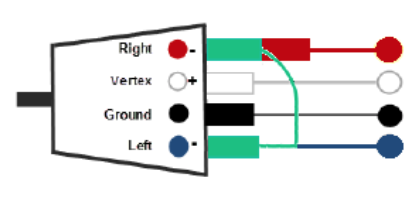Subscribe to the Interacoustics Academy newsletter for updates and priority access to online events
Training in Corticals (ALR P300 MMN)
Why use Jumper Cables with the EPA4 Cable Collector?
Description
My Interacoustics distributor suggested I get these green jump leads but I’m not sure what they are for?
Answer:

These connectors are extremely useful so we say you have made a very wise purchase here even if you do not use it at all times, necessarily.
Possible applications include infant cortical evoked potentials in the sound field (for hearing instrument evaluation). The rationale is as follows – in awake infants when you measure the corticals you may, from time to time, struggle with the tendency of some patients, being children, to tug and pull at the electrode wires attached to their head (a new challenge in this test which doesn’t arise in sleeping infants). What this means is that you may well find that you prefer to only use three electrodes (less cables to tug at and faster to (re)attach). The problem is the two-channel Eclipse (4 electrodes) will not work well if you try to use only one channel (3 electrodes) – the sweeps will all get rejected due to the electrical noise from the open channel. So a cost effective way around this is to use the jumper cable. What you do is “jump” together the left and right slots in the collector box like I show you in the below schematic. This means the Eclipse “thinks” that two channels are being used (4 electrodes) when in fact you might only be using 3 electrodes (e.g. high-forehead, one mastoid, and ground on the low forehead). In this case the data in the two channels will be identical because of the physical connection of the jumper cable.
Another application is in adult patients where the Auditory Late Response has been used in medico-legal settings and other applications for objective threshold estimation. The jumper cable can be used to give the so-called “linked mastoid” montage. Linked mastoids is where you use the jumper cable in the same way I just described (connect right and left slots) but with 4 electrodes (inc. right and left mastoid electrodes as references) still attached to the patient. It is a little like making the two mastoid recording sites “merge” into one, so to speak, although this is slightly simplifying the effect.

Jumper cable allowing 3-electrode recordings using an EPA4 collector box (e.g. no electrode in “left” slot in this example)

Jumper cable allowing "linked mastoid" recordings on EPA4 collector box (i.e. both left and right mastoid electrodes are connected and jumped together)
Presenter

Get priority access to training
Sign up to the Interacoustics Academy newsletter to be the first to hear about our latest updates and get priority access to our online events.
By signing up, I accept to receive newsletter e-mails from Interacoustics. I can withdraw my consent at any time by using the ‘unsubscribe’-function included in each e-mail.
Click here and read our privacy notice, if you want to know more about how we treat and protect your personal data.
